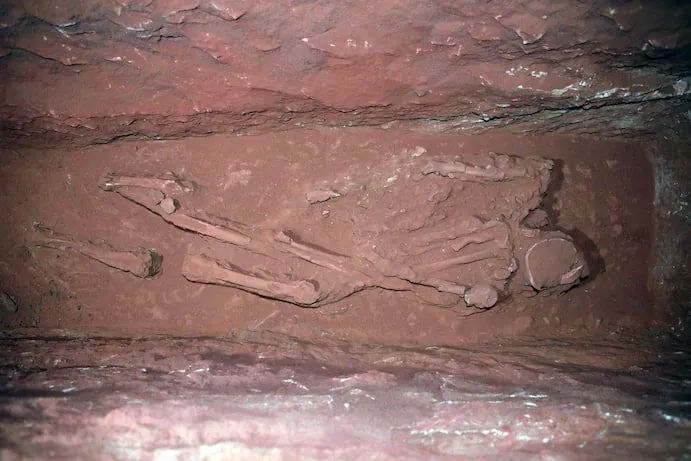Tomb and bowl similar to the “Holy Grail” found in Jordan
Kyiv • UNN
Archaeologists have discovered a tomb with human remains and a ceramic vessel similar to the Holy Grail under the Treasury in Petra. The discovery may reveal the secrets of the building and shed light on the origin of the Nabataeans.

Archaeologists have discovered human remains and a ceramic vessel that looked like the Holy Grail under the Treasury in Petra, Jordan. This was reported by The Washington Post, according to UNN.
Details
It is noted that about 2000 years ago, the ancient Nabataean kingdom carved a city into the sandstone cliffs of Petra by hand, and in its center was an impressive building with 12 columns that became known as the Treasury. Archaeologists have long tried to figure out what this structure was used for, and some have suggested that it was the mausoleum of an important ruler of that era.
Now a team of researchers has made what they called a “stunning” discovery: the remains of 12 people and other items have been found in a chamber under the Treasury, which they say may finally reveal the secrets of the structure and shed light on Petra's origins.
The discovery is “amazing. This work will shed light on the Treasury itself - on its construction and date. The material extracted from our excavations has great potential to tell us about the early history of Petra and, possibly, about the origin of the Nabataeans,” the scientist said,
Chrisman said the human remains could help reveal how the Nabataeans, whose kingdom lasted from about the 4th century BC to 106 AD, lived and buried the dead. He expressed hope that it will be possible to recover ancient DNA from the remains.

Chrisman added that the excavations could also lead to a better understanding of the environment in which Petra's inhabitants lived and thrived. “Today, Petra has dried up, but it was once a relatively prosperous place. I hope we can learn from the past and use it to improve our common future,” he said.
The scientist noted that the researchers used new technological tools, including remote sensors that work on radar, to determine the location of the tomb, which for centuries was buried deep under the rubble of a supposed natural disaster and the construction of the Treasury above it.
When researchers began excavating the tomb, they discovered at least 12 skeletal remains and objects, including a ceramic vessel that, according to Josh Gates, host of the Warner Bros. television series, “looked almost identical to the Holy Grail” from Steven Spielberg's Indiana Jones and the Last Crusade, which was filmed in the Treasury.
Chrisman said that the architecture of the buried tomb is the “most fascinating” aspect of the discovery because its “design and use are quite unique to Petra.
The implications of these ancient construction decisions give us confidence in the likelihood that more important new discoveries will be made in the Treasury as excavations progress
According to Chrisman, there are still many questions about the Nabataeans and their city. However, he noted that the current “excavations are bringing scientists closer than ever before” to solving this mystery.